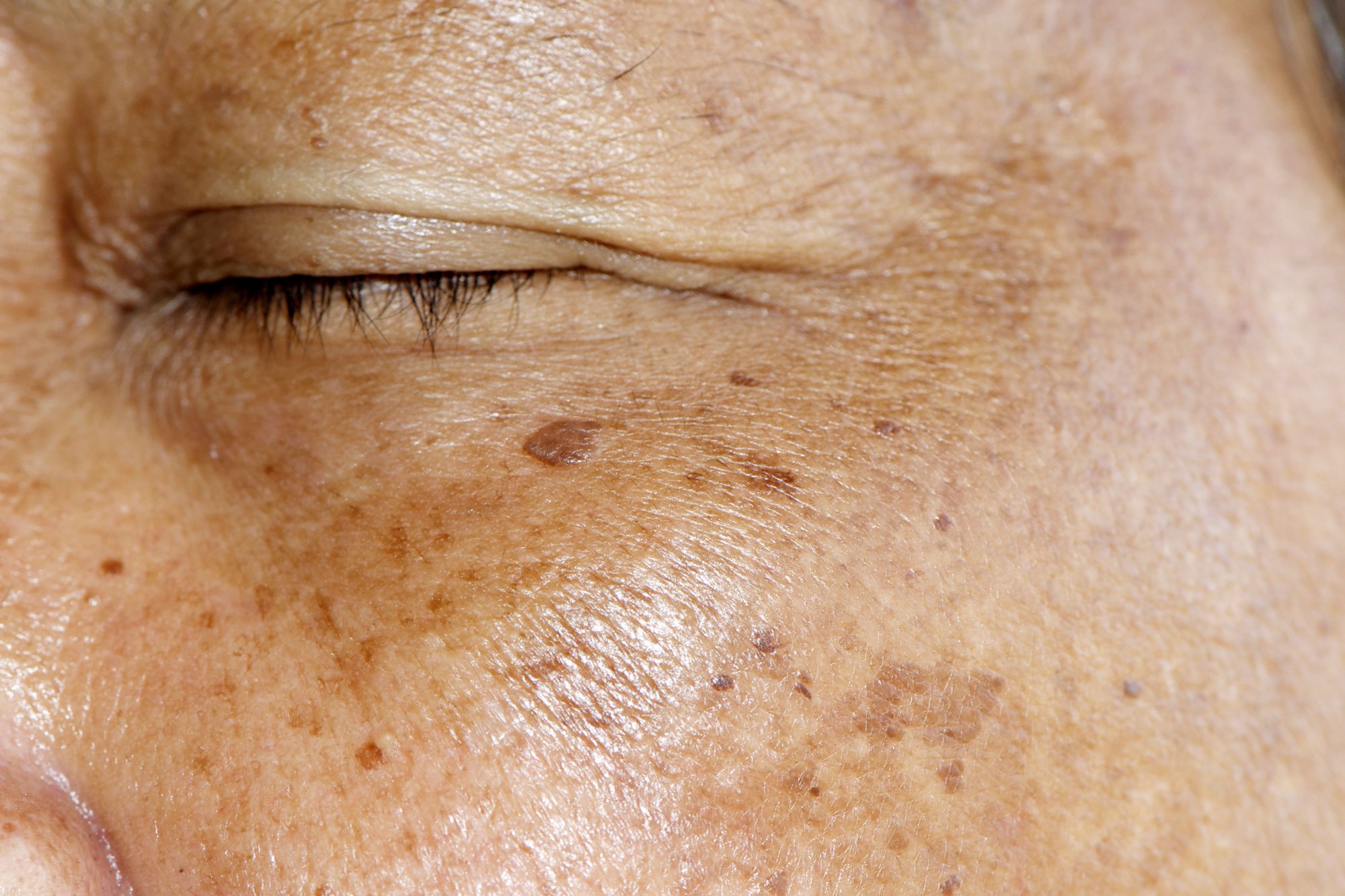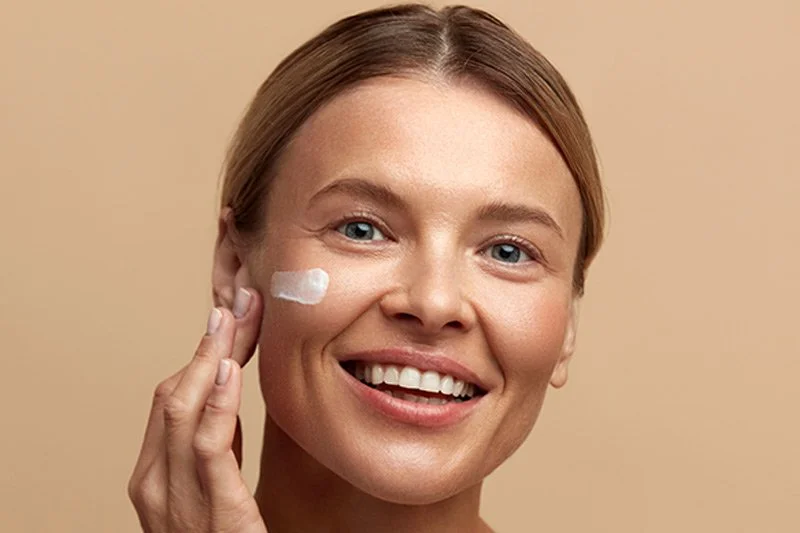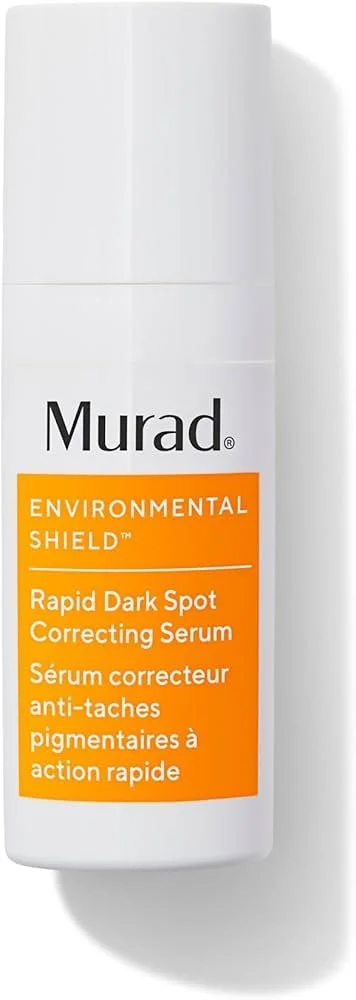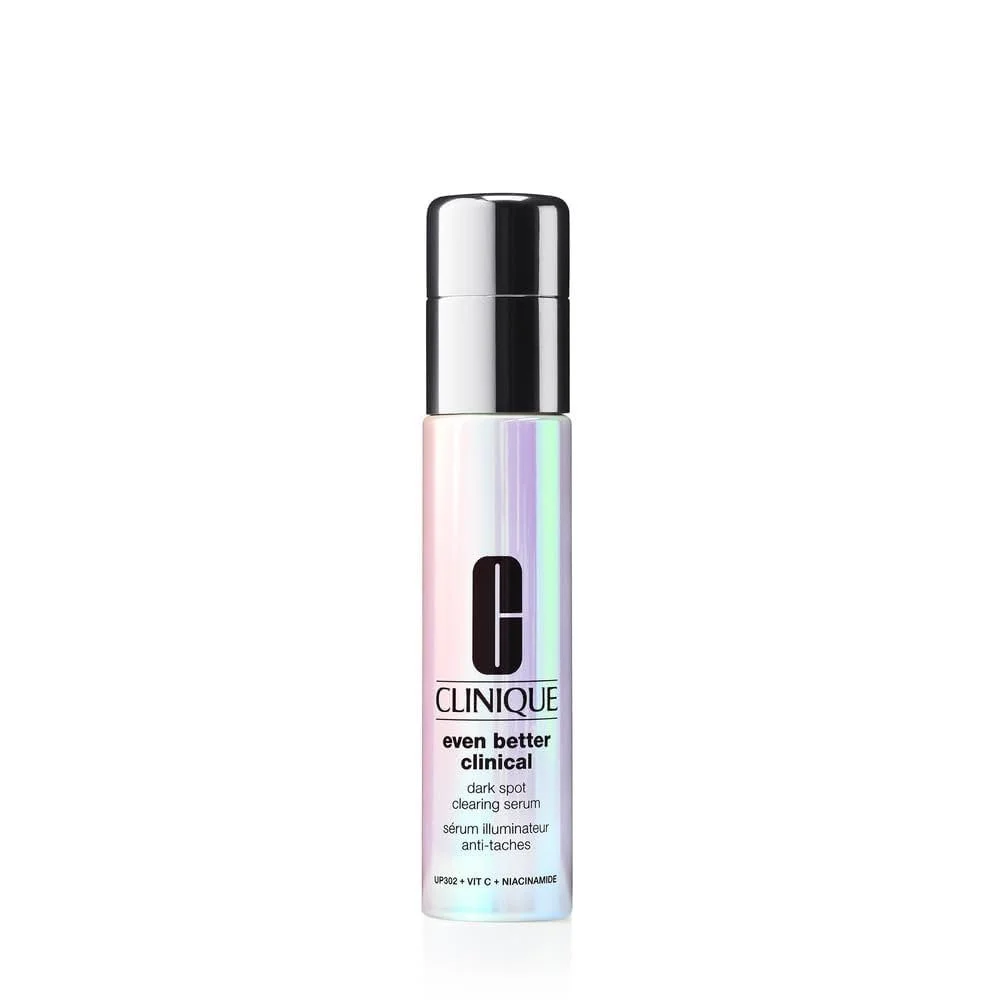Brown Spot Correctors
Products, Ingredients, Options, and What to Know
Hyperpigmentation and brown spots on the skin are among the most common skin concerns seen in dermatology offices around the globe. This occurs when the skin develops increased melanin content and/or a higher number of melanocytes, usually from a combination of genetics, aging, and sun exposure. They also can develop during periods of hormonal changes, inflammation or other disease processes. If you have brown spots on your skin you should always consult a dermatologist to determine if these are benign before starting any treatment. Cancerous or malignant lesions should not be treated with lightening or bleaching products.
Benign (non-cancerous) brown spots or areas of hyperpigmentation can be treated. There are a variety of options including chemical peels, lasers, prescription medications and over the counter products. Usually treatment plans involve one or more of these options. Over the counter products can almost always be incorporated into the treatment plan. Strict adherence to daily sunscreen usage is also absolutely necessary. Daily sunscreen is the foundation of any treatment plan. Without it, even the best serums and creams will struggle. From there, choosing the right brightening ingredient is the next step.
This article was designed to focus on over the counter topical treatment options.
Treatment Options
Topical treatments remain the first line for most people. They target pigment in different ways: reducing melanin production, preventing its transfer to skin cells, or speeding up turnover of pigmented cells. Common active ingredients include retinol, niacinamide, arbutin, ferulic acid, kojic acid, glycolic acid, salicylic acid, tranexamic acid, resorcinol, thiamidol and vitamin C and others.
There are different categories of ingredients which can be used in combination with one another.
Chemical exfoliants, such glycolic acid or salicylic acid and retinols or retinol alternatives, work by causing a gentle chemical peel which removes unwanted superficial hyperpigmented cells. This gradual process allows the skin cells to start turning over more quickly which produces newer and lesser pigmented cells over time.
Melaninogenesis inhibitors/brighteners mainly work by inhibiting tyrosinase (the rate limiting enzyme in the melanin synthesis pathway). Brighteners include hydroquinone, vitamin C (ascorbic acid and its derivatives), thiamidol, arbutin, 4-butylresorcinol, licorice root extracts and other acids (kojic, tranexamic, glycolic, salicylic). Niacinamide also inhibits the production of melanin in an alternative pathway (inhibiting the transfer of melanosomes from melanocytes to keratinocytes).
Key Over-the-Counter Ingredients
Thiamidol
Trade name for isobutylamido thiazolyl resorcinol, a synthetic resorcinol derivative identified as the most potent inhibitor of human tyrosinase. Extremely effective at reducing melanin synthesis. This is one of the newer options.
Niacinamide (Vitamin B3)
Improves uneven tone by reducing pigment transfer from melanocytes to keratinocytes. Also strengthens the skin barrier and calms redness. Typically used in 2–10% concentrations and well tolerated.
Glycolic Acid (AHA)
A cross over agent which works by chemical exfoliation as well as tyrosinase inhibition. Over-the-counter products usually contain 5–15%. Increases sun sensitivity, so sunscreen is essential.
Salicylic Acid (BHA)
Another cross over agent which works by chemical exfoliation as well as down regulating tyrosinase. It is an oil-soluble exfoliant that penetrates pores and removes dead cells. Useful for acne-prone skin and post-acne dark marks.
Tranexamic Acid
A relatively newer option in skincare, helpful for melasma and stubborn pigmentation. Works by interrupting pathways that lead to excess melanin production (inhibition of the plasminogen–plasmin system in keratinocytes as well as downregulating melanocyte tyrosinase activity). Often found in serums at low concentrations.
Kojic Acid
A natural skin-lightening agent derived from fungi. Works by tyrosinase inhibition. Popular in treatments for melasma, sun spots, and uneven skin tone.
Ferulic Acid
An antioxidant often paired with vitamin C and E to make them more stable and effective. Shields the skin from free-radical damage caused by UV rays and pollution. Commonly found in combination serums for extra protection and brightening.
Vitamin C
A powerful antioxidant that brightens skin while protecting it from oxidative stress. Helps fade pigmentation and also boosts collagen production. Works best in stabilized forms like L-ascorbic acid, usually between 10–20%.
Azelaic Acid
A multitasker that calms inflammation, smooths texture, and fades discoloration. Often used for acne, rosacea, and post-acne marks. Available in over-the-counter formulas at 10%, with higher strengths available by prescription.
Bakuchiol
A plant-based alternative to retinol. Promotes skin turnover and helps fade pigmentation with less irritation compared to traditional retinoids.
Resorcinol
Used in some chemical peels and lightening products, but carries more risk of irritation. More common in professional treatments than everyday skincare.
Arbutin and Plant Extracts
Arbutin (including alpha-arbutin) is derived from bearberry. Works by tyrosinase inhibition to interfere with melanin production. Often paired with mulberry, licorice, or vitamin C for added brightening effect.
Retinoids
Retinol is the most widely used over-the-counter retinoid. It is converted in the skin to retinaldehyde and then to all-trans retinoic acid (tretinoin), the bioactive form. Retinol improves fine lines, wrinkles, hyperpigmentation, and photoaged skin, with good tolerability and efficacy in long-term use. Retinol is commonly found in cosmeceutical formulations at concentrations ranging from 0.1% to 1%.
Retinaldehyde (retinal) is a direct precursor to retinoic acid and is approximately ten times more bioavailable than retinol. It is increasingly used in cosmeceutical products for its efficacy in improving hyperpigmentation, fine lines, and skin texture, with a favorable safety profile and minimal irritation. Retinaldehyde is typically formulated at concentrations of 0.05% to 0.1%.
Retinyl esters (such as retinyl palmitate and retinyl acetate) are storage forms of vitamin A that are less potent but more stable. They are converted to retinol in the skin and are used in cosmetic products for mild antiaging and pigmentary benefits.
Prescription retinoids such as tretinoin (all-trans retinoic acid), adapalene, and tazarotene are not retinols or retinals but are related compounds with established efficacy for hyperpigmentation and photoaging. These are generally reserved for more severe cases due to their higher potency and irritation potential.
Multi-Ingredient Products:
REMEDY for Dark Spots
Ingredients: 0.1% Encapsulated Retinol, Mandelic Acid, 1% Kojic Acid, Glutathione, Licorice Root, 3% Tranexamic Acid, 5% Niacinamide, Silymarin, and Acetyl Glucosamine
Price: $38 for 1oz (Remedy Website)
Notes: Developed by dermatologists as a comprehensive color corrector with multiple active ingredients. This formula is designed to target the look of dark spots and uneven tone from multiple angles, combining brightening agents, exfoliants, and skin-soothing ingredients. This approach makes it suitable for a wide range of skin types while providing professional-level results at home.
Murad Dark Spot Correcting Serum
Ingredients: Resorcinol, Tranexamic Acid, Glycolic Acid
Price: $29 for 0.33oz (Murad Website, Target)
Notes: Dermatologist-developed formula targeting hyperpigmentation from multiple pathways. Resorcinol helps disrupt melanin formation, Tranexamic Acid calms inflammation that drives discoloration, and Glycolic Acid resurfaces skin for improved clarity and absorption. Effective for stubborn dark spots and uneven tone, with results enhanced when paired with daily SPF.
Clinique Even Better Clinical Dark Spot Serum
Ingredients: Vitamin C, Niacinamide, Salicylic Acid, Glucosamine, and Clinique’s proprietary brightening molecule, UP302
Price: $63 for 1oz (Clinique Website)
Notes: Dermatologist-developed for hyperpigmentation and uneven skin tone. Balances potent brightening actives like Vitamin C, Niacinamide, and Salicylic Acid with soothing Glucosamine for better tolerance. Powered by Clinique’s proprietary UP302 molecule for targeted dark spot correction. Recommended as part of a daily regimen and always paired with SPF.
La Roche-Posay Mela B3 Serum
Ingredients: 10% niacinamide, proprietary Melasyl complex, capryloyl salicylic acid derivative
Price: $45 for 30mL (Ulta Beauty, Walmart, Target)
Notes: Lightweight serum, fragrance-free, designed for daily use on uneven tone
Good Molecules Discoloration Correcting Serum
Ingredients: 3% TeraCeutic TXVector™ (Cetyl Tranexamate Mesylate), 4% Niacinamide
Price: $12 for 1oz
Notes: Affordable, dermatologist-inspired serum designed for stubborn pigmentation. Advanced tranexamic acid technology fades dark spots, melasma, and post-acne marks, while niacinamide refines tone and texture. Dual-action approach helps both correct visible discoloration and prevent new spots from surfacing. Best results with consistent use and SPF protection.
Civant Meladerm
Ingredients: Azelaic derivative, niacinamide, tranexamic acid, alpha-arbutin, vitamin C derivative, mulberry and bearberry extracts
Price: usually $68 for 1.7oz (Civant Website)
Notes: Combines multiple brightening ingredients in one formula
Kiehl’s Clearly Corrective Dark Spot Solution
Ingredients: Vitamin C, peony extract, white birch extract, buffered salicylic acid
Price: around $65 for 30 mL (Kiehl’s Website)
Notes: Well-known vitamin C serum positioned for brightening and spot correction
Admire My Skin Ultra-Potent Brightening Serum
Ingredients: Kojic acid, lactic acid, vitamin C, azelaic acid, and salicylic acid
Price: $23 for 30mL (Amazon, Admire My Skin Website)
Notes: Dermatologist-favored for melasma and stubborn pigmentation. Combines multiple strong actives, including kojic acid and resorcinol, for visible results. Recommended as a short-term, targeted treatment and always paired with SPF.
ISDIN Melatonik Overnight Recovery Serum
Ingredients: Bakuchiol, vitamin C, melatonin
Price: $175 for 30mL (Dermstore, ISDIN Website)
Notes: Derm-beloved antioxidant night serum. Bakuchiol provides retinol-like benefits with less irritation, while antioxidants support skin repair overnight. Recommended for sensitive skin needing tone improvement.
Faded Brightening and Clearing Serum
Ingredients: Azelaic Acid, Centella Asiatica Leaf Extract, Kojic Acid, Melatonin, Niacinamide
Price: $38 for 1oz (Amazon)
Notes: Targets dark spots and uneven tone with a blend of brighteners and skin-repairing agents. Azelaic Acid and Kojic Acid address discoloration directly, while Niacinamide supports barrier strength. Centella Asiatica soothes irritation, and Melatonin adds antioxidant protection. Designed as a gentle yet effective option for daily use, always paired with SPF.
Dermistry Kojic + Resorcinol Fairness Cream
Ingredients: Kojic acid, resorcinol, niacinamide, botanical extracts
Price: $15 for 50g (Herbkart Website)
Notes: Budget-friendly cream targeting uneven tone and pigmentation. Combines kojic acid and resorcinol, two active ingredients dermatologists frequently use in professional lightening formulations.
Simple Ingredient Products:
Eucerin Radiance Tone Regimen (Dual Serum, Daily Lotion SPF 30, Night Cream)
Ingredients: Thiamidol (patented anti-pigment ingredient), hyaluronic acid, glycerin, dexpanthenol, broad-spectrum UVA/UVB filters
Price: Each product typically around $35–$45 (Eucerin Website, Amazon, Target, Walmart)
Notes: Designed as a complete brightening system. The Dual Serum targets existing dark spots with concentrated Thiamidol and hyaluronic acid. The Daily Lotion SPF 30 prevents new pigmentation while moisturizing and protecting with broad-spectrum sun filters. The Night Cream supports overnight regeneration, hydrates, and continues spot reduction. Dermatologists often recommend using all three together for best results.
Paula’s Choice 10% Niacinamide Booster
Ingredients: Niacinamide
Price: around $40 for 20mL (Paula’s Choice Skincare Website)
Notes: Concentrated niacinamide serum that can be mixed into moisturizer or serum
The Ordinary Alpha Arbutin 2% + HA
Price: $11.50 for 1oz (The Ordinary, Amazon, Ulta, Target, and Walmart)
Notes: Hydrating serum with alpha-arbutin for dark spots; easy to layer with other products
The Ordinary Glycolic Acid 7% Toning Solution
Price: about $8.70 for 3.1mL (The Ordinary, Ulta, Target, and Sephora)
Notes: Popular chemical exfoliant for brighter skin; can be irritating if overused
The Ordinary Azelaic Acid Suspension 10%
Price: $12 for 30mL (The Ordinary Website)
Notes: Simple formula that targets both acne-related discoloration and uneven tone
Daily Routine
A practical routine for fading brown spots could look like this:
Morning
● Gentle cleanser
● Brightening serum (vitamin C or niacinamide-based)
● Moisturizer
● Sunscreen (SPF 30 or higher, reapplied if outdoors)
Evening
● Cleanser
● Targeted active (tranexamic acid, azelaic acid, or arbutin)
● AHA or BHA exfoliant a few nights per week, depending on tolerance
● Retinoid or bakuchiol (alternate nights if using exfoliants)
● Moisturizer
Progress takes time – typically three months or more of consistent use.
When to see a dermatologist
If over-the-counter products aren’t making a difference after several months, stronger treatment options may be needed. A dermatologist can prescribe hydroquinone, tretinoin, or combination creams tailored to your skin. It’s also important to seek medical care if spots are changing in size, shape, or color, as these changes can sometimes signal skin cancer rather than harmless pigmentation.
At Cardinal Dermatology Center, our board-certified dermatologist, Dr. Kevin Nethers, and Physician Assistant, Mary Candace Seagle, can provide expert guidance on retinols, skincare, and prescription-strength treatments if over-the-counter options aren’t enough. Contact Us.








